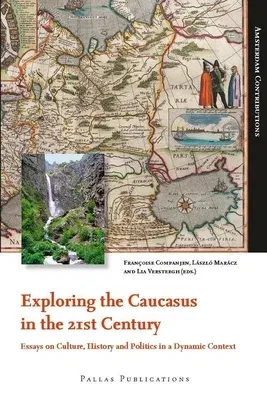Exploring the Caucasus in the 21st Century: Essays on Culture, History and Politics in a Dynamic ContextPaperback, 6 September 2010

Temporarily out of stock
Free Delivery
Cash on Delivery
15 Days
Free Returns
Secure Checkout

Part of Series
Amsterdam Contributions
Print Length
256 pages
Language
English
Publisher
Pallas Publications
Date Published
6 Sep 2010
ISBN-10
9089641831
ISBN-13
9789089641830
Description
Product Details
Book Format:
Paperback
Country of Origin:
US
Date Published:
6 September 2010
Dimensions:
23.39 x
15.6 x
1.37 cm
ISBN-10:
9089641831
ISBN-13:
9789089641830
Language:
English
Location:
Amsterdam
Pages:
256
Publisher:
Series:
Weight:
362.87 gm